The Story of My Last House
My husband spent his childhood in this village where I live now.
When he got very ill, he wanted to return to the place where he grew up. So we looked around.
Unfortunately, every house we saw had severely damaged lower walls.
Then we made a bold decision. We bought the house we had passed for nearly ten years while visiting a friend.
And so, our acquaintance became our neighbor.
First impressions
It was a more than 100-year-old adobe house. It hadn’t been lived in for at least 10 years — only rats, mice, and snakes had.
I didn’t even dare to step inside at first.
But my husband said:
I’ve seen worse.”
(He was a bricklayer.)
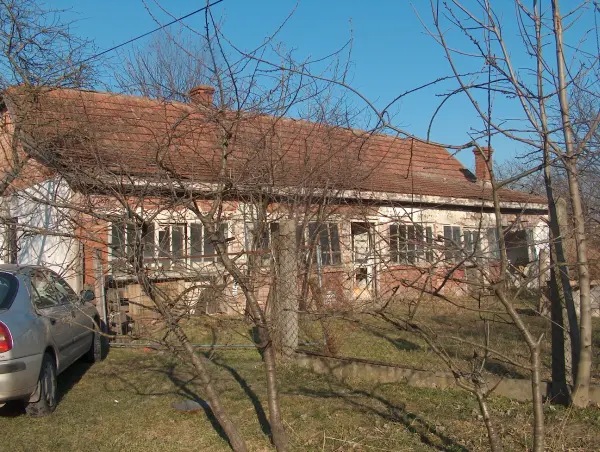
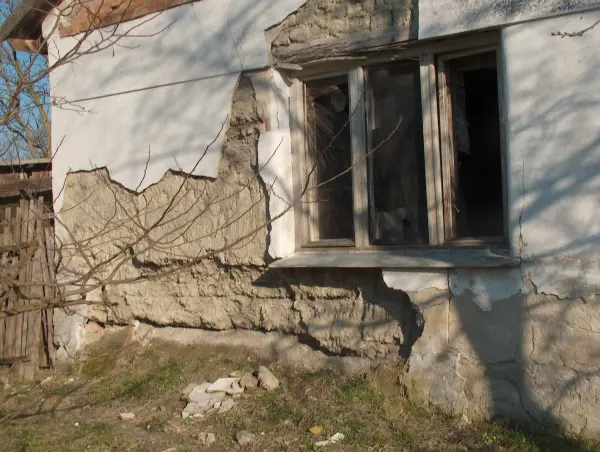
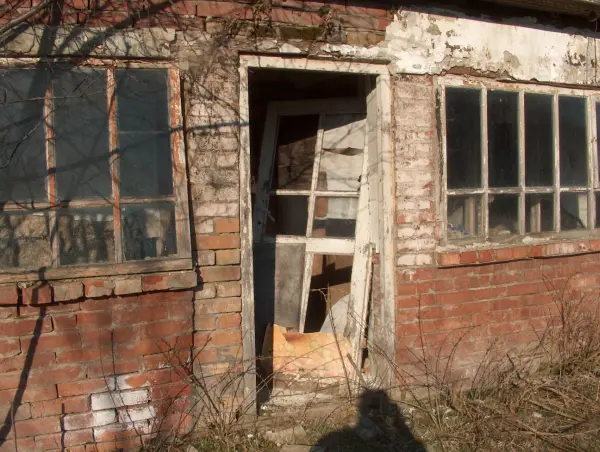
That gave me courage.
One door was half collapsed, the other locked.
Inside: holes on top of holes. Piles of debris. Missing partition walls. The only access was over a mound of clay.
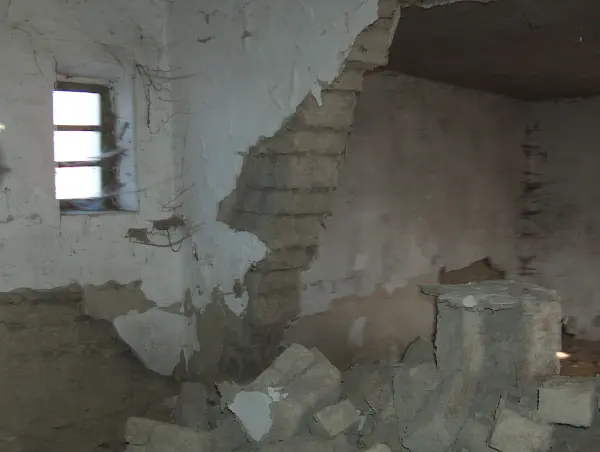
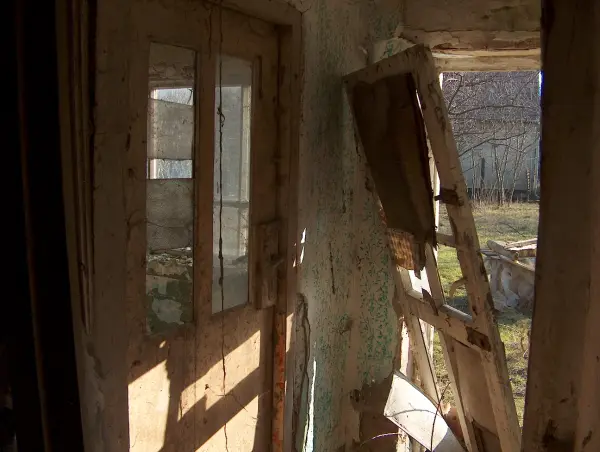
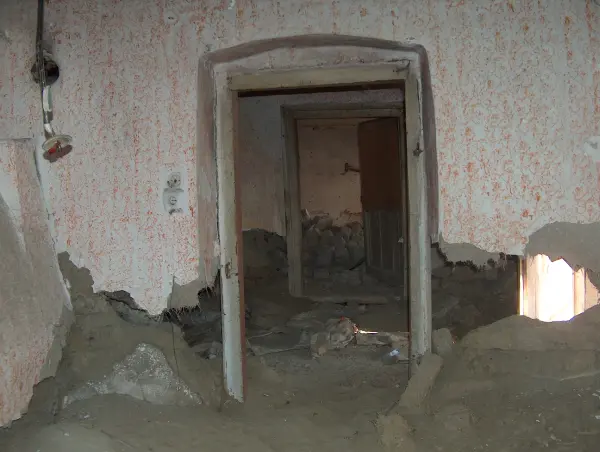
But it was cheap.
I thought, if we couldn’t renovate it, at least the plot would remain — we’d find another use for it.
Work begins
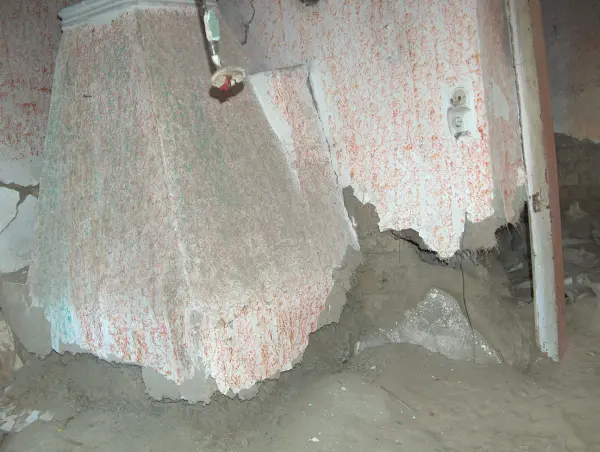
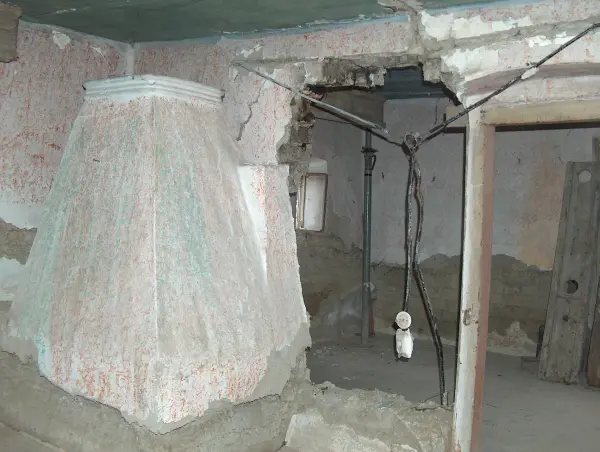
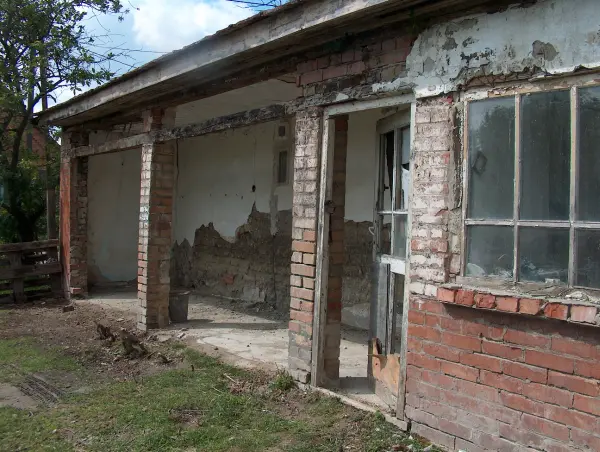
The first task was cleaning — in masks and safety glasses.
Then, under my husband’s guidance, we supported the critical parts of the structure.
Friends came to help occasionally, but most of the work we did together.
We came down on weekends, as I was still working during the week.
On weekends I became a “laborer.”
I pushed the wheelbarrow without stopping.
And the debris pile outside grew larger and larger.
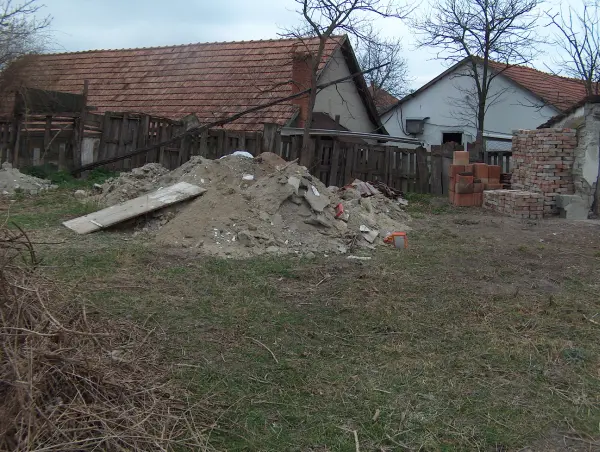
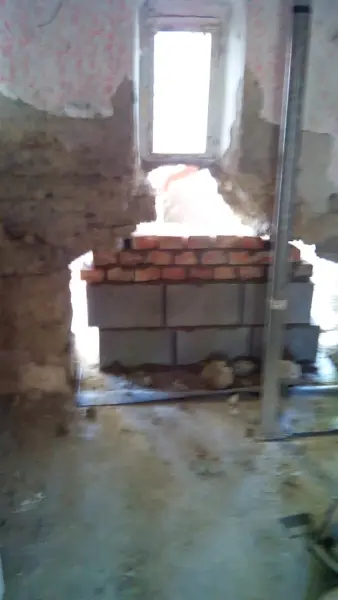
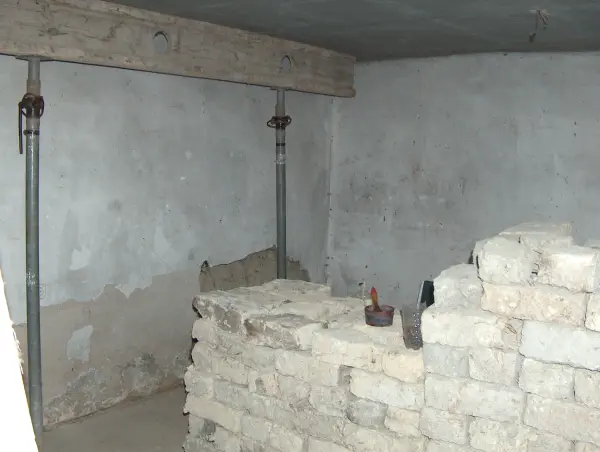
I think even the men would have been impressed.
But I enjoyed the physical work.
This was the third house we renovated together.
Foundations
For a year, we worked solely on the foundation.
Step by step: digging, pouring concrete, applying tar paper. Then rebuilding the wall sections.
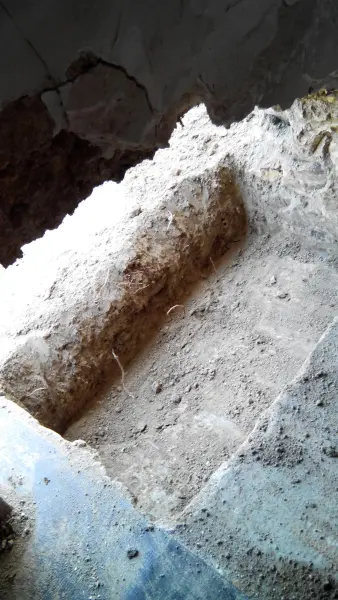
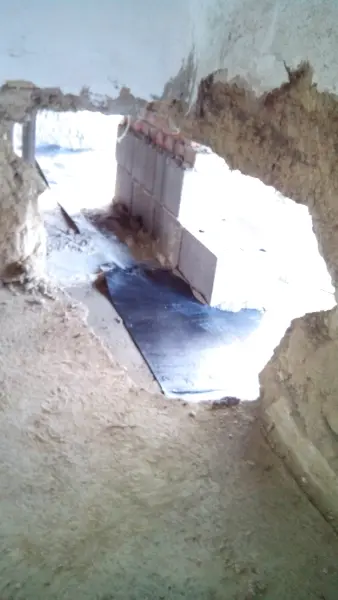
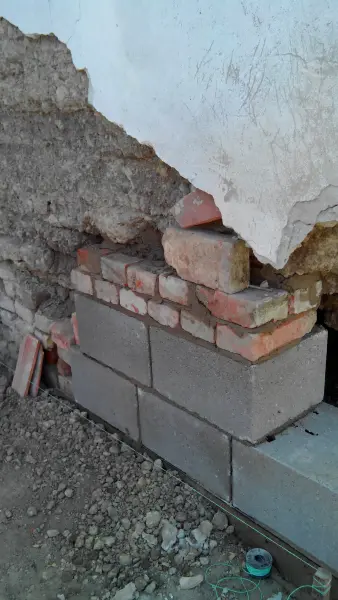
As it was originally built with adobe bricks, we tried to reuse them. Sometimes we had to add new bricks.
Sometimes we rebuilt only 1×1 meter, sometimes up to the ceiling — depending on how much had collapsed.
Passers-by didn’t understand what we were doing, since from the outside it just looked like the pile of debris was growing.
Whenever I overheard their curiosity, I joked:
Tell them we’re digging a tunnel to the neighbor.”
It took a full year to finish the foundations around the house.
Walls and demolitions
Of course, the walls we didn’t need stayed intact, and the ones we needed had collapsed.
That clay mix was so hard I never imagined it could be. It just wouldn’t fall.
In the end, we tore down what wasn’t needed and hauled away the rubble.
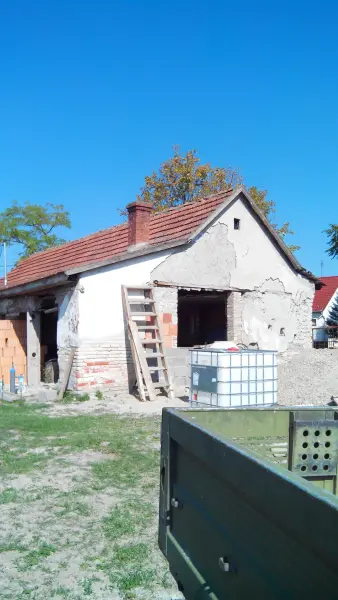
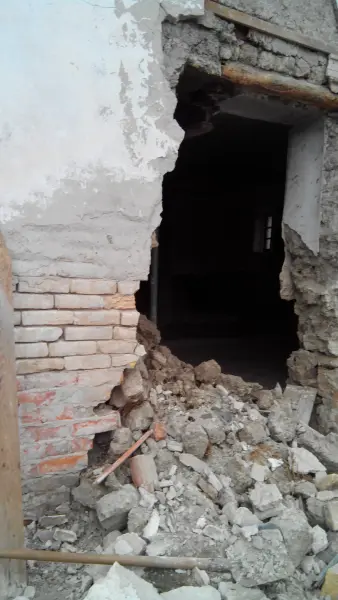
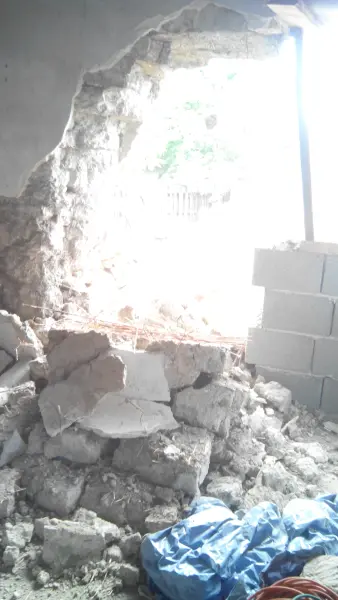
Construction begins
We first built the wall between the future bedroom and bathroom. That’s where the first chimney went.
Then came the front part of the house.
Because of the four large, floor-to-ceiling windows, we built pillar-like structures.
Again, this confused many passers-by:
Why are they putting four doors in the house?”
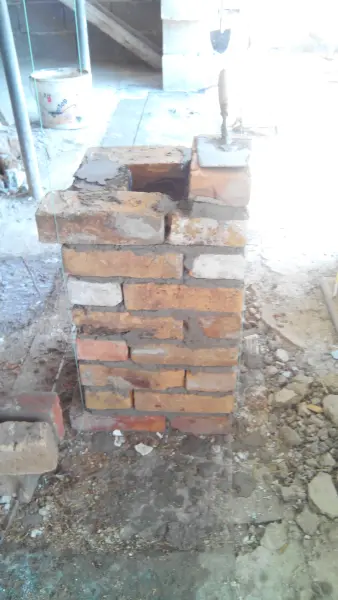
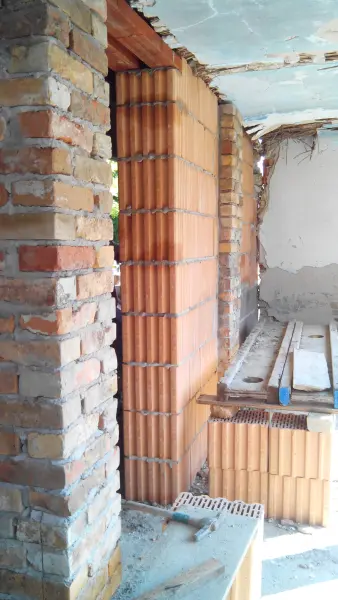
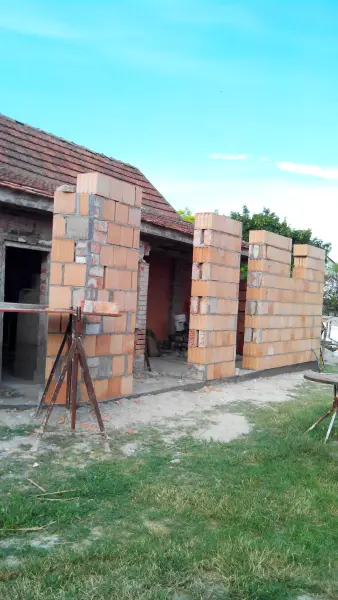
Roof and rain
Then came the roof. First, we tore off the old one.
And from that moment — it rained continuously. For a whole week.
The roofers worked like this:
30 minutes on the roof → 2 hours waiting → repeat.
But eventually, the roof was completed.
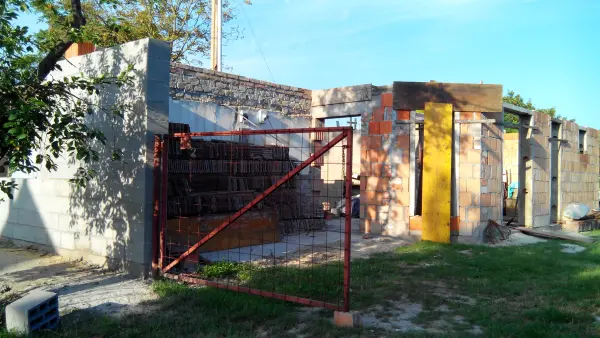
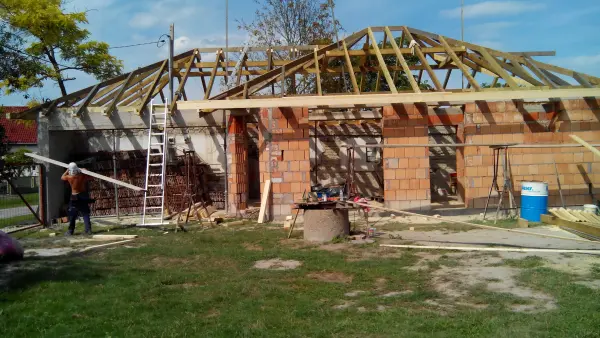
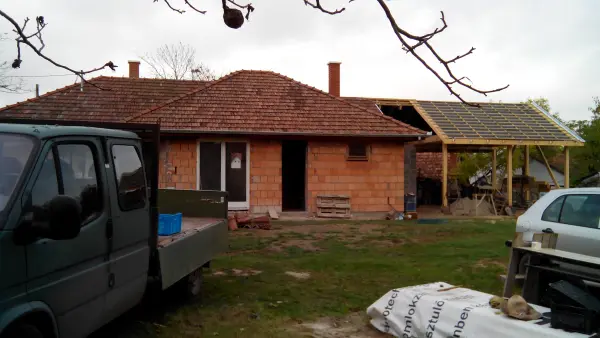
And then we celebrated
A little.
By then, we had been working on the house for almost two years.
Everyone we knew was curious.
A lot of people gathered. We ate, we talked. A lot.

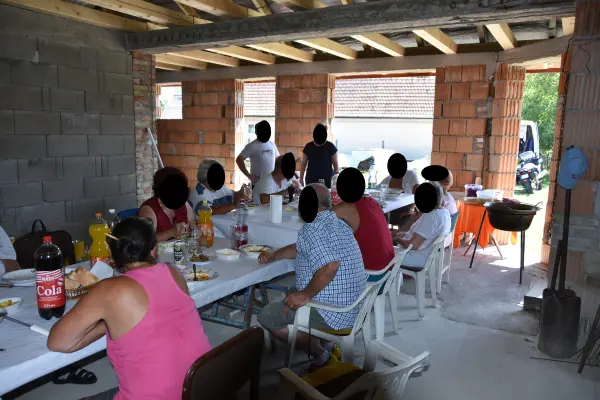

A whole sheep was turned into a cauldron stew.
The best I’ve ever had in my life.
(Not cooked by me — the neighbor’s son made it.)
I keep telling him he should start a business — his cooking is top class.
Interior works begin
Now only “little things” were left: painting beams and planks.
My husband wanted a real wooden farmhouse ceiling, so we had to paint hundreds of boards.
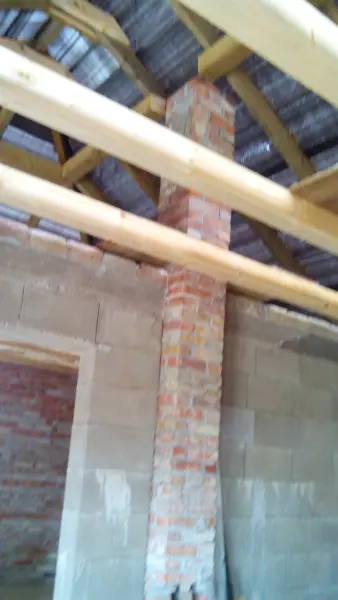
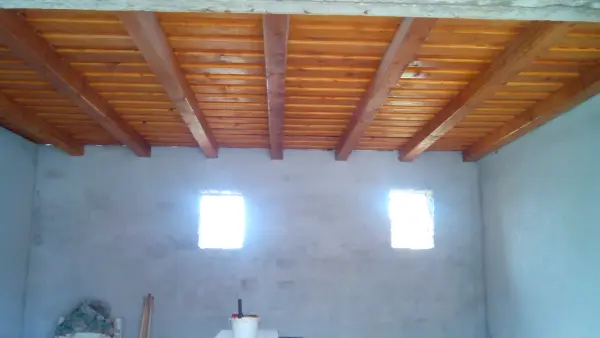
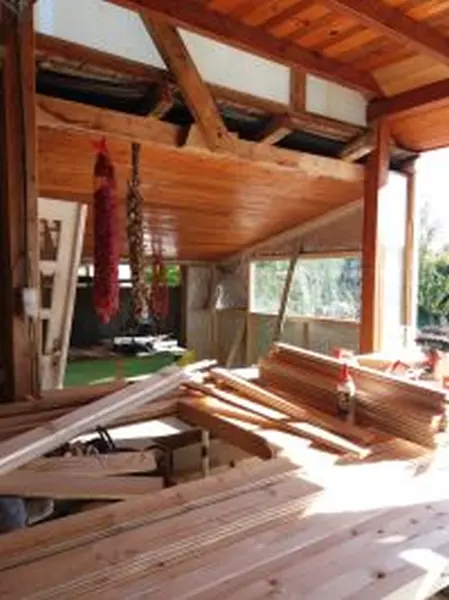
Then came the hammering. Thousands of nails.
Fitting everything. Partition walls. Chimney. Underfloor heating. Wiring. Plastering. Painting. Windows.
Year three passed quickly.
We could finally move in.

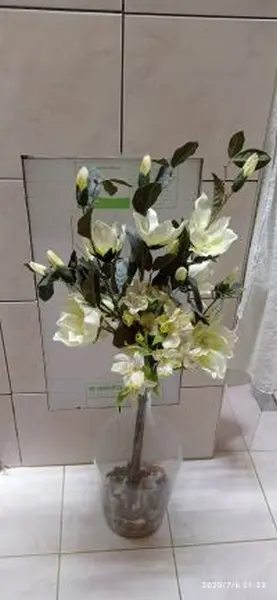
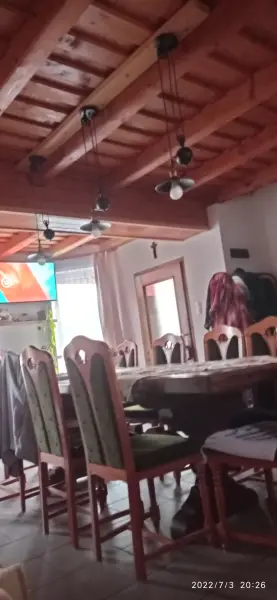
Other memories
Our bed was in the back of our van. Two mattresses fit perfectly.
In the summer, we never felt too hot — unlike our neighbors.
Our “bathroom” was two stacked 1000-liter water tanks with a shower head and plastic wrap around.
Bathing was always a bit exciting — we had to finish before dark. It gets darker here than anywhere else.
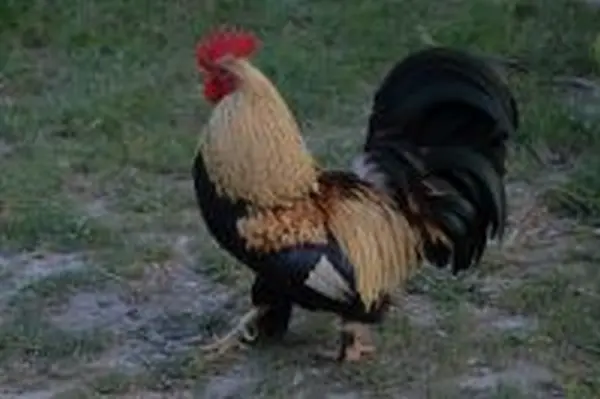
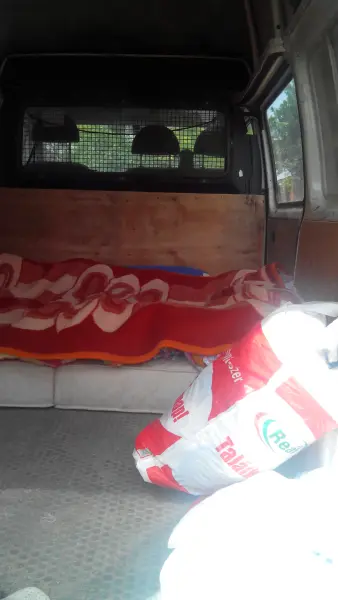
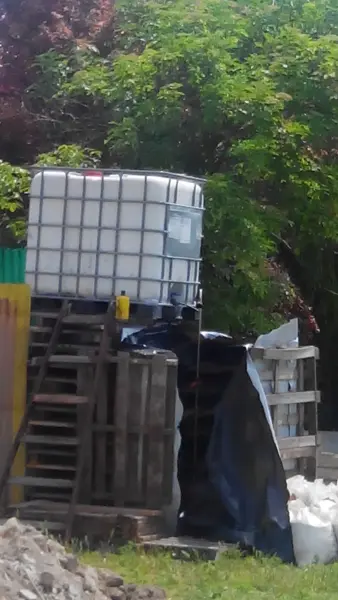
We had a little dwarf rooster, too (technically the neighbor’s).
He marched through the yard every morning for two or three years.
Then one day, he vanished — but he outlived his owner.
And the walnut tree!
The only shade we had during construction.
That’s where we rested when tired and where we ate lunch — whether we were many or just the two of us.
The well
Almost forgot the well.
We kept tripping over it during construction.
It gave tractor drivers headaches when backing in with trailers.
But they always managed.
These tractor guys are impressive.
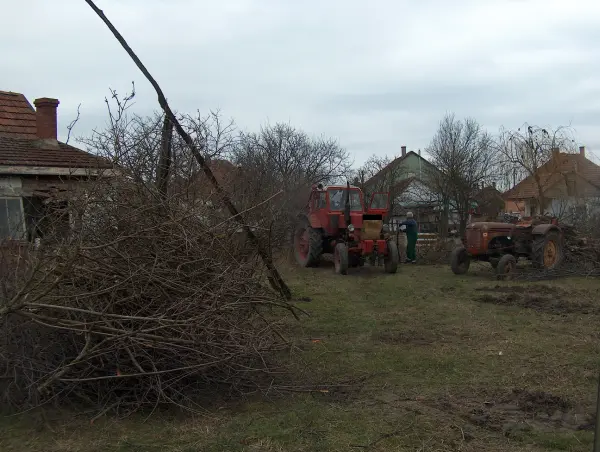
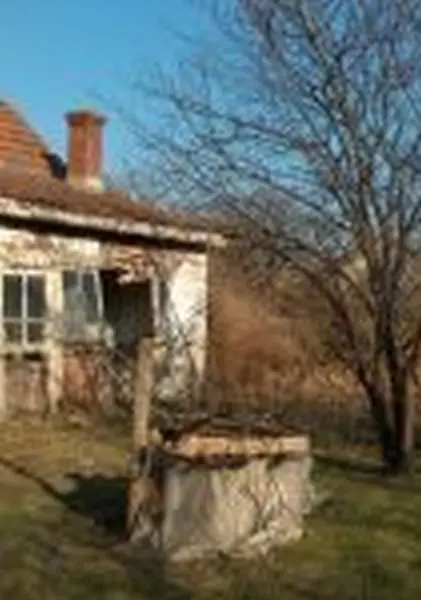
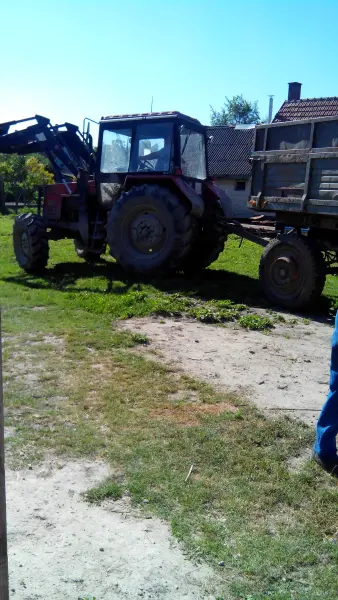
In the end, we filled in the well — it emptied in five minutes with a pump.
We had originally planned to use it for water supply.
Helpers and stories
Though most of the house was built by the two of us, many came to help.
Some even brought tents and slept here.
And the cooking — it happened on campfires, gas stoves, in cauldrons, pots, or skewers.
We ate and worked.
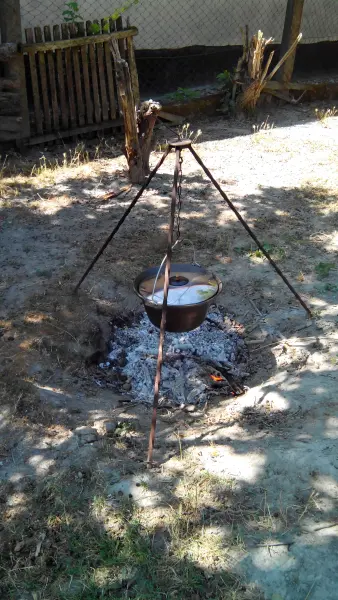
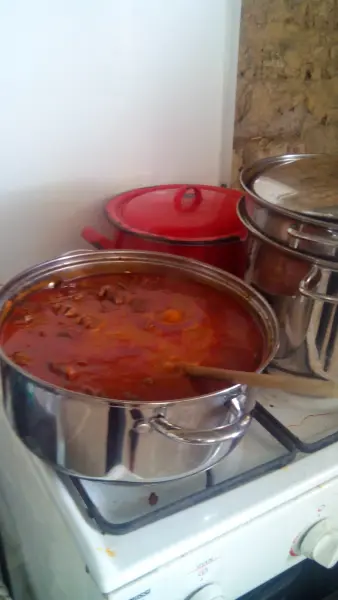

Women often exchanged recipes and kitchen tips with our neighbor.
It was hard, but good
We built everything with the future in mind:
for old age — practical, comfortable, accessible.
Yard and garden
As we neared the end of construction, the tractor came to plow the yard.
And then the surprise:
a shocking amount of buried trash surfaced.
I had my work cut out — but after that, I could finally garden again.
Which I love.
First harvest
Everything grew in extraordinary size.
The soil had rested for years.
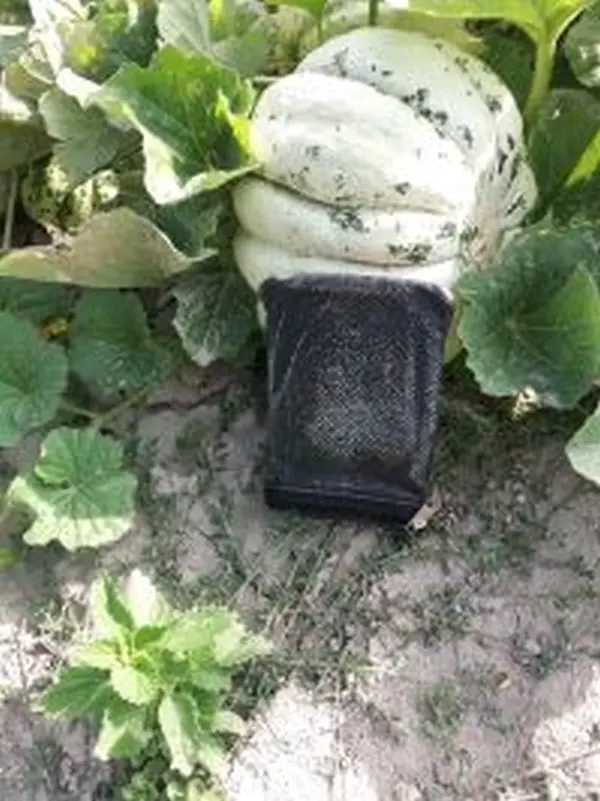
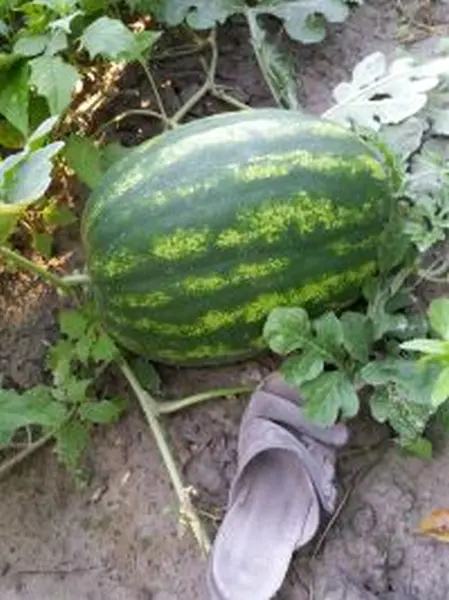
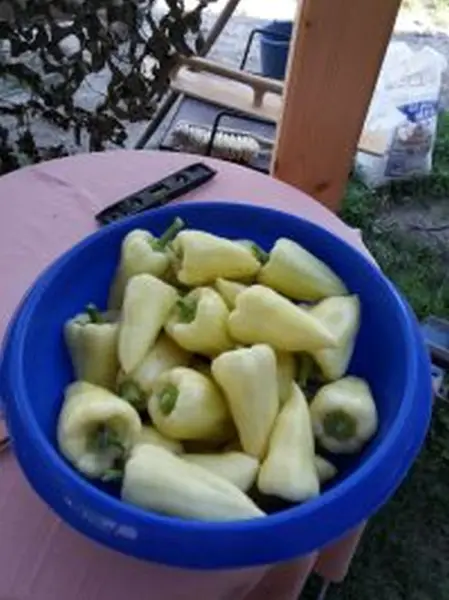
It’s completely different from where I used to live.
There: sandy.
Here: heavy, black, clay-like soil.
I had to relearn gardening — even after a lifetime of doing it.
If it rains: you sink to your knees.
If it’s dry: it’s like stone.
Never step outside without boots!
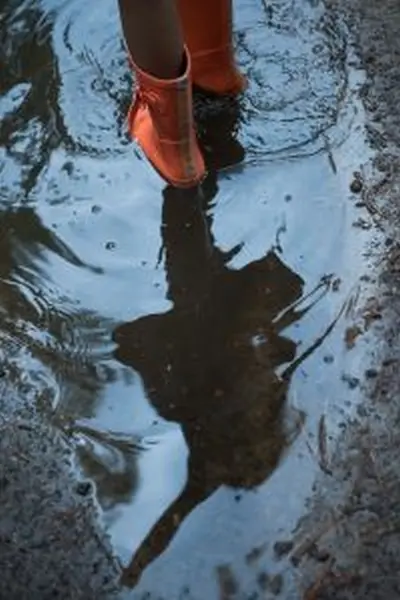
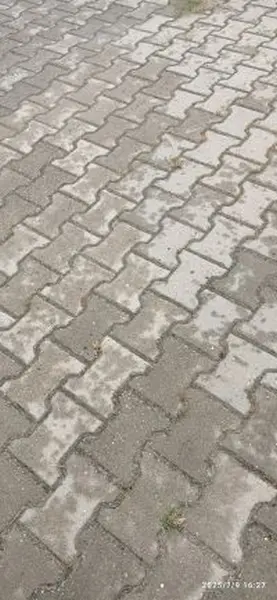
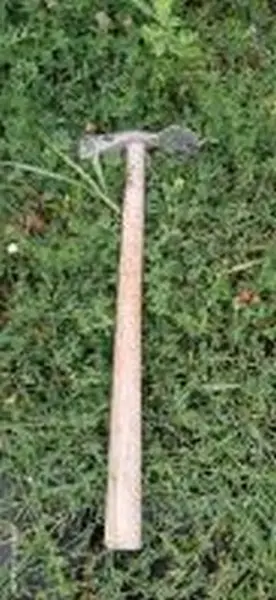
My husband gave me his small demolition hammer — I still use it in the garden.
It’s very hard to cultivate.
Most locals don’t grow vegetables — they plant grass instead.
You can’t just pull weeds.
But if you dig them out with roots and soil, they re-root instantly.
But the harvest…
Unmatched.
Same amount of planted potatoes — 2 buckets in the old house, 2 sacks here!
After the first rain
After the yard was plowed and the first rain came, we couldn’t drive out on our own.
We had to call a tractor to pull us out.
That’s when we decided to pave the driveway with bricks.
That became the next year’s project.
Five more years
My husband moved here permanently.
And I started commuting.
First only weekends.
Then every other day: Friday I came, Monday I left.
Tuesday I came again.
Five years of back and forth.



Sadly, he’s no longer with us.
But I didn’t want to leave this house.
When I retired — I moved down too.